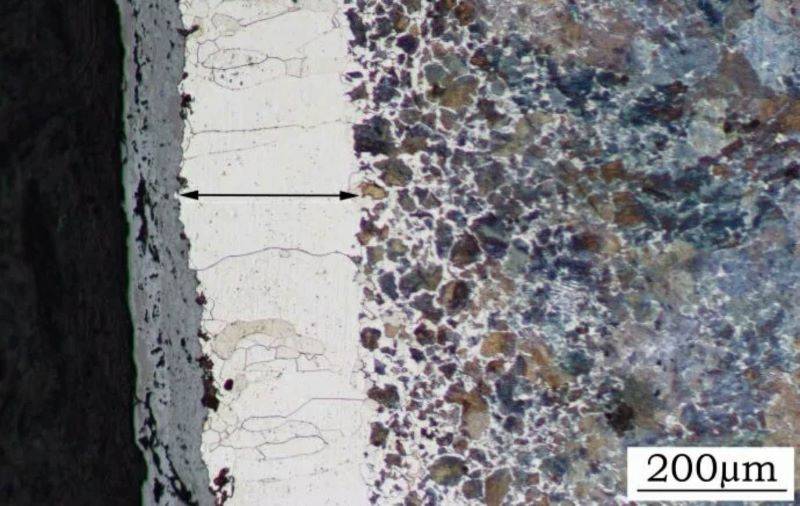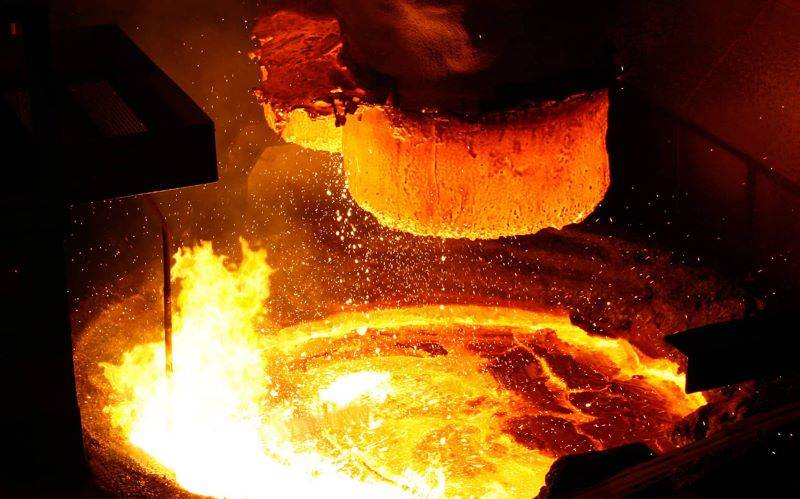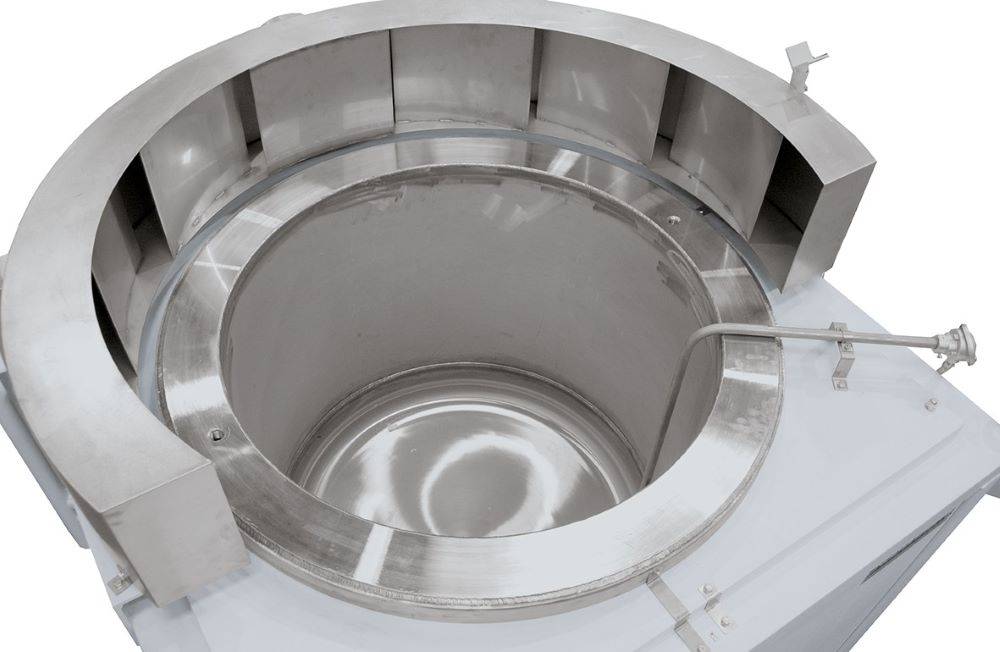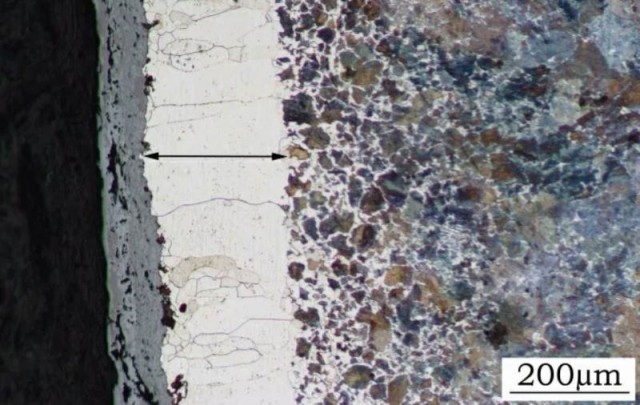Protective Effects of Vacuum Heat Treatment
No Oxidation and Decarburization
Vacuum heat treatment stands out for its ability to prevent oxidation and decarburization, which are common issues in conventional heat treatment processes. By operating in a controlled vacuum environment, the risk of oxygen exposure is virtually eliminated, thereby preserving the metallic luster and mechanical properties of the workpiece. This is particularly crucial for materials that are sensitive to surface degradation, ensuring that the final product maintains its aesthetic appeal and functional integrity.
In contrast to traditional methods where the presence of oxygen can lead to the formation of oxides and the loss of carbon from the surface layer, vacuum heat treatment offers a pristine environment. This not only prevents the formation of undesirable surface defects but also enhances the overall quality and durability of the treated components. The absence of oxidation and decarburization allows for a more consistent and predictable outcome, which is essential for applications requiring high precision and reliability.
Moreover, the preservation of the workpiece's metallic properties through vacuum heat treatment can lead to significant cost savings and operational efficiencies. By avoiding the need for post-treatment surface refinements, manufacturers can streamline their processes and reduce waste, ultimately contributing to a more sustainable and economically viable production cycle.

Surface Quality Improvement
Heating materials in a vacuum environment offers significant advantages over conventional heat treatment methods, particularly in terms of surface quality. By avoiding direct contact with oxygen, vacuum heat treatment ensures that the workpiece retains its metallic luster and does not undergo oxidation or decarburization. This results in a bright, pristine surface that is not only visually appealing but also enhances the overall heat treatment quality.
The absence of oxygen in a vacuum setting prevents the formation of oxides on the metal surface, which is a common issue in atmospheric heat treatment. This not only preserves the original surface finish but also prevents the degradation of mechanical properties that can occur due to oxide formation. The controlled environment of vacuum heat treatment allows for precise temperature management, further contributing to the uniformity and quality of the heat treatment process.
Moreover, vacuum heat treatment can lead to improved surface integrity by reducing the presence of contaminants and impurities. This is achieved through the process of degassing, where volatile elements are effectively removed from the metal, enhancing its plasticity, toughness, and fatigue strength. The result is a workpiece with superior surface characteristics that are essential for applications requiring high precision and durability.
In summary, the use of vacuum heat treatment for improving surface quality is a superior method that offers numerous benefits over traditional techniques. It not only prevents the formation of undesirable oxides and contaminants but also ensures that the workpiece maintains its original metallic luster and mechanical properties, making it an ideal choice for industries where surface finish and integrity are critical.
Enhanced Mechanical Properties
Degassing and Surface Purification
Vacuum heat treatment offers a superior method for degassing metals, a process that significantly enhances their mechanical properties. By creating a vacuum environment, the treatment effectively removes trapped gases within the metal, such as hydrogen, nitrogen, and oxygen. This degassing process is crucial as it not only purifies the metal surface but also deep within its structure.
The benefits of degassing are manifold. Firstly, it significantly improves the plasticity of the metal, allowing it to be shaped and formed with greater ease and precision. Secondly, it enhances toughness, making the metal more resistant to breaking or cracking under stress. Lastly, it boosts fatigue strength, enabling the metal to withstand repeated loading cycles without failure.
These improvements are not merely theoretical; they are backed by empirical evidence. For instance, metals treated with vacuum heat degassing have shown up to 30% increase in fatigue life compared to untreated metals. This is particularly important in applications where durability and reliability are paramount, such as in aerospace, automotive, and industrial machinery components.
In summary, vacuum heat treatment's ability to degas and purify metal surfaces is a cornerstone of its superiority over conventional methods. The resultant improvements in plasticity, toughness, and fatigue strength make it an indispensable process in high-performance metalworking.

Oxide Decomposition
Lowering the vacuum below the decomposition pressure of oxides is a critical step in the vacuum heat treatment process. This technique not only aids in the decomposition of oxides but also significantly enhances the purification of the metal surface. When the vacuum level is reduced, the partial pressure of oxygen drops, creating an environment where oxide layers can no longer be sustained. This results in the gradual breakdown of these oxides, liberating the metal surface from impurities.
The process of oxide decomposition under vacuum is particularly effective for metals that are prone to oxidation, such as stainless steel and titanium alloys. By controlling the vacuum pressure, it is possible to tailor the treatment to specific metal types and their respective oxide layers. This precision ensures that the metal surface remains free from contaminants, thereby preserving its mechanical properties and enhancing its overall quality.
Moreover, the purification achieved through oxide decomposition under vacuum conditions leads to a more uniform and consistent surface finish. This is crucial for applications where surface integrity is paramount, such as in aerospace components and medical devices. The absence of oxide layers not only improves the aesthetic appeal but also enhances the functionality and longevity of the treated parts.
In summary, the strategic lowering of vacuum pressure to below the decomposition threshold of oxides is a powerful method for achieving a clean, pure metal surface. This process is integral to the broader benefits of vacuum heat treatment, offering superior surface quality and preserving the intrinsic properties of the metal.
Minimized Workpiece Deformation
Reduced Thermal Stress
Vacuum heat treatment significantly minimizes thermal stress, which is a critical factor in reducing workpiece deformation. Unlike conventional heat treatment methods, which often subject workpieces to large temperature gradients, vacuum heat treatment operates under controlled conditions that maintain small temperature differences. This controlled environment ensures that the workpieces experience minimal thermal stress, leading to negligible deformation.
The reduction in thermal stress is achieved through several mechanisms. First, the absence of oxygen in the vacuum environment prevents the formation of thermal gradients that can cause uneven heating. Second, the controlled heating and cooling rates in a vacuum setting allow for a more uniform distribution of heat across the workpiece, further reducing the risk of thermal stress-induced deformation.
To illustrate the effectiveness of vacuum heat treatment in minimizing thermal stress, consider the following comparison:
| Parameter | Vacuum Heat Treatment | Conventional Heat Treatment |
|---|---|---|
| Temperature Differences | Small | Large |
| Thermal Stress | Low | High |
| Workpiece Deformation | Minimal | Significant |
This table highlights how vacuum heat treatment outperforms conventional methods by maintaining lower thermal stress and consequently resulting in minimal deformation. The controlled atmosphere and precise temperature management in vacuum heat treatment not only preserve the integrity of the workpiece but also enhance its overall quality and performance.
Comparison with Salt Bath Treatment
Vacuum heat treatment stands out significantly when compared to salt bath treatment, particularly in terms of minimizing workpiece deformation. While salt bath treatment is known for its ability to achieve rapid heating and uniform temperature distribution, it often leads to substantial deformation due to the high thermal stresses induced by the rapid heating process. In contrast, vacuum heat treatment reduces deformation by approximately 70%, primarily because it operates under a controlled atmosphere with minimal thermal gradients.
This substantial reduction in deformation is not just a theoretical advantage but has tangible benefits in industrial applications. For instance, the increased stability and uniformity of the heat treatment process in a vacuum environment lead to higher product qualification rates. This is particularly crucial in industries where precision and consistency are paramount, such as aerospace, automotive, and medical device manufacturing.
| Aspect | Vacuum Heat Treatment | Salt Bath Treatment |
|---|---|---|
| Deformation | Reduces deformation by 70% | High deformation due to rapid heating |
| Product Qualification | Higher product qualification rates | Lower qualification rates due to deformation |
| Thermal Stress | Minimal thermal stress | High thermal stress |
| Environmental Impact | Safe and environmentally friendly | Potential pollution and public hazards |
The table above succinctly highlights the key differences between vacuum heat treatment and salt bath treatment, emphasizing the superior performance of vacuum heat treatment in reducing deformation and enhancing product quality.

Quality Assurance
Reduced Volatility of Elements
The controlled atmosphere within vacuum heat treatment environments plays a crucial role in minimizing the volatility of various elements, particularly those with high vapor pressures such as gold. This controlled environment ensures that the elements remain stable and do not evaporate or react with surrounding gases, thereby maintaining the integrity and consistency of the material's composition.
For instance, gold-containing alloys, which are often used in critical applications due to their excellent electrical and thermal conductivity, can lose substantial amounts of gold if subjected to conventional heat treatment methods. The vacuum environment, however, acts as a protective barrier, preventing such losses and ensuring that the alloy retains its desired properties.
| Element | Vapor Pressure at Standard Conditions | Impact on Quality |
|---|---|---|
| Gold | Low | High retention |
| Silver | Moderate | Moderate retention |
| Copper | High | Low retention |
Moreover, the reduction in volatility not only preserves the quality of the elements but also enhances the overall performance of the treated materials. This is particularly beneficial in industries where precision and consistency are paramount, such as aerospace, electronics, and medical devices. By preventing the loss of critical elements, vacuum heat treatment ensures that the final product meets stringent quality standards and performs reliably under various conditions.
In summary, the reduced volatility of elements achieved through vacuum heat treatment is a significant advantage that contributes to the consistent quality and performance of materials, making it an indispensable process in advanced manufacturing.
Efficiency and Stability
Vacuum heat treatment stands out for its exceptional thermal efficiency, which translates into rapid heating and cooling cycles. This efficiency is not merely a matter of speed; it also ensures that the process maintains a high level of stability and repeatability. The controlled environment within the vacuum chamber allows for precise temperature management, which is crucial for achieving consistent results across multiple treatments.
Moreover, the rapid heating and cooling capabilities of vacuum heat treatment contribute significantly to its stability. This is particularly beneficial for materials that require specific thermal profiles to achieve optimal mechanical properties. The ability to maintain such consistency means that manufacturers can rely on vacuum heat treatment for high-volume production runs without the risk of variability in the final product.
In summary, the efficiency and stability of vacuum heat treatment are not just technical advantages but are fundamental to the quality and reliability of the end products, making it a superior choice over conventional heat treatment methods.
Operational Benefits
Safe and Environmentally Friendly
Vacuum heat treatment offers a secure and eco-friendly operational environment, distinguishing it from conventional heat treatment methods. Unlike processes that involve open flames or chemical baths, vacuum heat treatment operates in a sealed chamber, eliminating the risk of toxic emissions and hazardous by-products. This method ensures that no harmful gases or particulate matter are released into the atmosphere, making it a preferred choice for industries concerned with environmental sustainability.
Moreover, the absence of pollutants not only safeguards the environment but also enhances workplace safety. Operators are not exposed to the risks associated with toxic fumes or hazardous waste, reducing the likelihood of occupational hazards. This dual benefit of environmental protection and health safety underscores the superiority of vacuum heat treatment in modern industrial practices.
